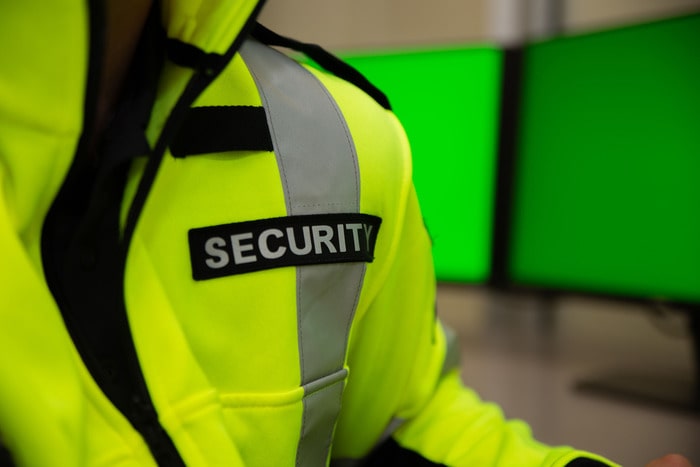
- September 18, 2023
- |Uncategorized
- | 0
- 373
The Executive Look –
In the world of executive security, the image and presentation of security personnel are as crucial as their skills and training. Security guards in various roles often find themselves balancing the need for professionalism, visibility, and effectiveness.
One of the key considerations in this balance is whether security guards are required to wear uniforms. In this article, we will explore the significance of uniforms in executive security, the factors influencing their use, and the potential alternatives that security companies like XPressGuards may employ to ensure both security and a polished appearance.
The Role of Uniforms in Security
Uniforms have long been associated with security personnel for several reasons, including:
1. Visibility: Uniforms make security personnel easily identifiable, allowing them to deter potential threats through their presence alone.
2. Professionalism: Uniforms convey a sense of authority and professionalism, which can be reassuring to clients and the public.
3. Team Cohesion: Uniforms foster a sense of unity and cohesion among security personnel, enhancing their sense of belonging to a team or organization.
4. Deterrence: Uniforms can deter would-be criminals by signaling that security is present and vigilant.
5. Safety: High-visibility uniforms enhance the safety of security personnel by making them more visible in crowded or dimly lit areas.
Factors Influencing Uniform Use
The decision to require security guards to wear uniforms is influenced by a range of factors:
1. Client Preferences: The preferences of clients play a significant role in determining whether uniforms are used. Some clients prefer a more discreet or upscale appearance for their security personnel, while others value the visibility of uniforms.
2. Security Environment: The nature of the security environment also matters. In high-profile or high-security settings, uniforms may be deemed necessary for a strong security presence.
3. Legal and Regulatory Requirements: Local, state, or federal regulations may dictate whether security personnel must wear uniforms in specific situations, such as licensed security guards.
4. Company Policy: The policies of the security company or organization employing the guards can vary. Some security companies have strict uniform requirements, while others allow flexibility based on client preferences.
5. Level of Security: The level of security required may impact the choice of uniforms. For example, executive protection details may opt for more discreet clothing to blend in with the client’s environment.
Types of Security Uniforms
Security uniforms come in various forms to cater to different needs and security settings:
1. Traditional Uniforms: These include standardized clothing items such as shirts, trousers, jackets, and hats, often displaying security insignia or logos.
2. High-Visibility Uniforms: Designed for safety and visibility, these uniforms often feature bright colors, reflective strips, and badges.
3. Blended Uniforms: Some security personnel wear uniforms with a mix of traditional and discreet clothing to balance professionalism and low visibility.
4. Plainclothes or Discreet Attire: In some executive security roles, guards may wear plainclothes or discreet attire to blend in with their client’s environment.
Alternatives to Traditional Uniforms
In situations where traditional uniforms may not be ideal, security companies often consider alternative approaches:
1. Business Attire: Security personnel may wear business attire, such as suits, blazers, and ties, which convey professionalism without the overt appearance of traditional uniforms.
2. Casual Attire: In less formal settings, security personnel may wear casual attire that is comfortable yet still professional.
3. Concealed Carry Clothing: Some security personnel may use concealed carry clothing, allowing them to discreetly carry weapons or equipment while maintaining a polished appearance.
4. Badges and Identification: Even without traditional uniforms, security personnel often wear identification badges or insignia that clearly identify them as security professionals.
Considerations in Uniform Selection
When deciding whether security guards should wear uniforms, several key considerations come into play:
1. Client Expectations: The expectations and preferences of the client are of utmost importance. Security companies must align their approach with what the client values most.
2. Security Environment: Assessing the security environment and the specific risks involved can help determine whether uniforms are necessary for a strong security presence.
3. Legal and Regulatory Requirements: Compliance with local laws and regulations is essential. Security companies must ensure that their attire choices meet legal standards.
4. Balancing Visibility and Discretion: Striking the right balance between visibility and discretion is crucial. High-profile clients may prefer discreet attire, while others value the visibility of uniforms.
5. Professionalism: Maintaining a professional appearance is non-negotiable. Whether in uniforms, business attire, or plainclothes, security personnel must convey professionalism at all times.
6. Flexibility: Security companies may need to adapt their attire based on the client’s specific security needs, which can vary from one assignment to another.
The question of whether security guards are required to wear uniforms in executive security is not a one-size-fits-all answer. It depends on a variety of factors, including client preferences, the security environment, legal requirements, and company policies. Striking the right balance between professionalism, visibility, and discretion is essential.
Security companies like XPressGuards understand that each security assignment may require a tailored approach to attire, and they are prepared to adapt to meet the specific needs and expectations of their clients. Ultimately, the goal is to provide effective security while maintaining a polished and professional appearance, whether through traditional uniforms or alternative attire options. Contact us to learn more.



